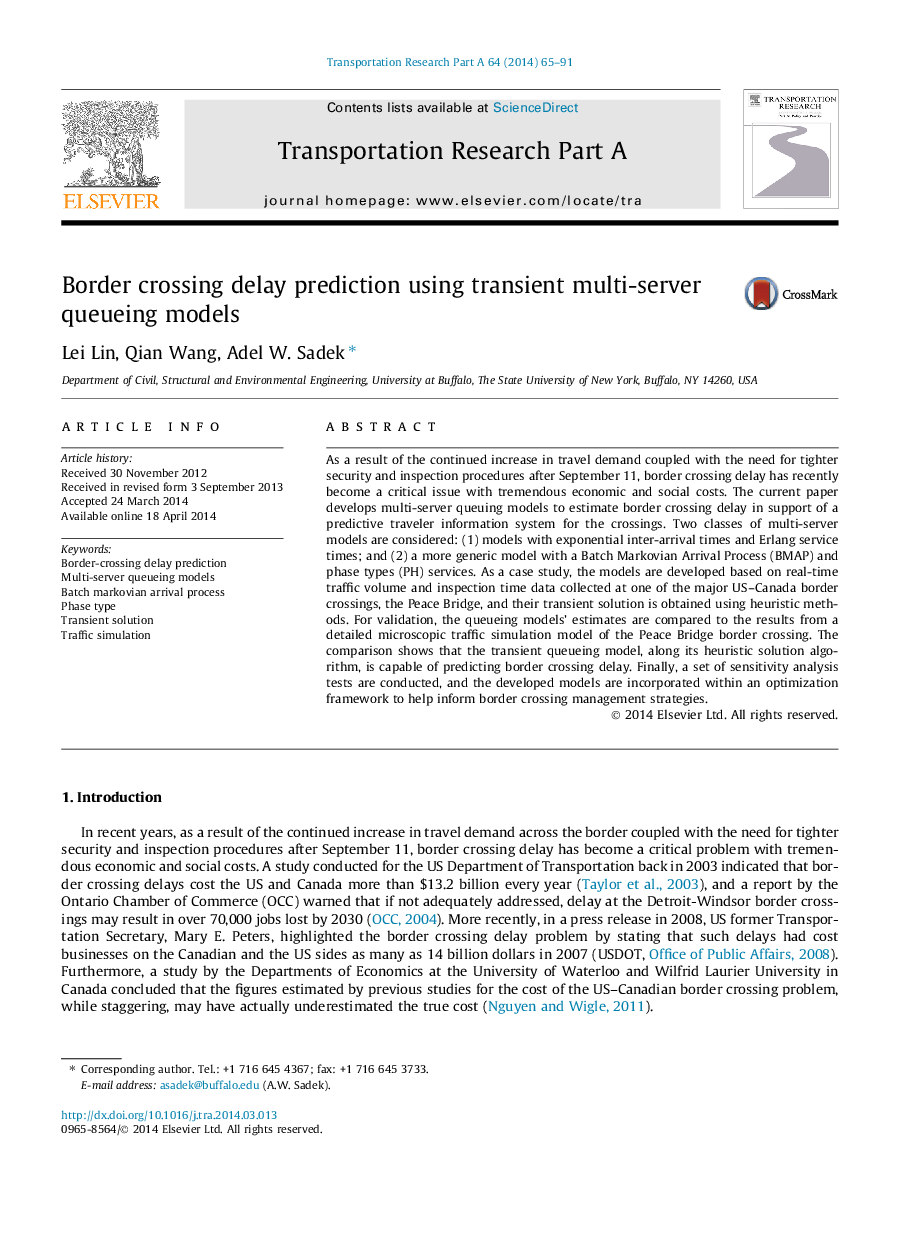| Article ID | Journal | Published Year | Pages | File Type |
|---|---|---|---|---|
| 6781783 | Transportation Research Part A: Policy and Practice | 2014 | 27 Pages |
Abstract
As a result of the continued increase in travel demand coupled with the need for tighter security and inspection procedures after September 11, border crossing delay has recently become a critical issue with tremendous economic and social costs. The current paper develops multi-server queuing models to estimate border crossing delay in support of a predictive traveler information system for the crossings. Two classes of multi-server models are considered: (1) models with exponential inter-arrival times and Erlang service times; and (2) a more generic model with a Batch Markovian Arrival Process (BMAP) and phase types (PH) services. As a case study, the models are developed based on real-time traffic volume and inspection time data collected at one of the major US-Canada border crossings, the Peace Bridge, and their transient solution is obtained using heuristic methods. For validation, the queueing models' estimates are compared to the results from a detailed microscopic traffic simulation model of the Peace Bridge border crossing. The comparison shows that the transient queueing model, along its heuristic solution algorithm, is capable of predicting border crossing delay. Finally, a set of sensitivity analysis tests are conducted, and the developed models are incorporated within an optimization framework to help inform border crossing management strategies.
Related Topics
Physical Sciences and Engineering
Engineering
Civil and Structural Engineering
Authors
Lei Lin, Qian Wang, Adel W. Sadek,
